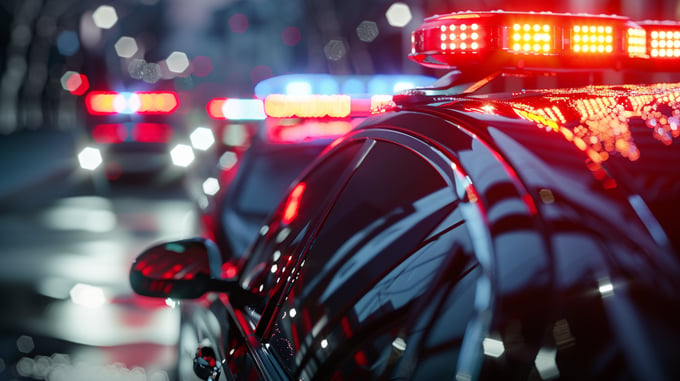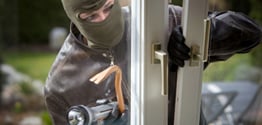In the most recent high-profile mass shooting event at Umpqua Community College in Oregon, we now know there was at least one concealed carrier on campus also present. The concealed carrier was advised to not advance the 200 yards to where he heard the shots being fired. The major distinction being that it would be difficult for law enforcement to identify him as a non-hostile shooter.
Did school officials have a point? Is there a chance you’ll be incorrectly ID’d by law enforcement in a school shooting event and end up taking fire?
It hasn’t happened yet (to our knowledge). If you know of such an event, please post it down in the comments section below and we’ll definitely look into it.
In the Umpqua Community College case, it took law enforcement all of five minutes to locate the shooter. The shooter, realizing he was facing other armed people and not just unarmed bystanders, quickly chose the easy way out and shot himself.
Seeing a trend?
1. Coward with a gun opens fire.
2. Runs into first armed resistance (LEO or otherwise).
3. Retreats if possible or takes his own life.
In very rare circumstances, the shooter is captured alive. That seems to be not the norm.
As concealed carriers, we have to take several factors into account before engaging shooters. In a lot of these events, the concealed carrier may be nowhere near the actual event taking place. Two hundred yards and an adjacent building? Yes — that’s a bit too far. Not only would you be treading across open ground, your firearm is drawn and you definitely look out of place from the crowds attempting to flee the scene or shelter in place.
Even if that concealed carrier on the campus of Umpqua had been fast enough to bolt over to the other building, he would have likely ran smack dab into law enforcement who were already en route. Those guys don’t know what the situation is. All they know is that shots are fired and it’s time for them to earn their pay — the hard way.
We can go ahead and dispense with the pleasantries: the second an active shooting situation occurs, it’s now a combat environment. Forget what you think you know about how ‘good guys’ and ‘bad guys’ are supposed to act and focus on the following things:
- 1. Secure YOUR Area
When shots ring out, your first job is to secure shelter and adequate cover. Unless the shots are extremely close, it’s often difficult (if not impossible) to positively identify (PID) a potential shooter.
The best thing you can do is get those around you to do the same. Let them know you’re there to help protect your area and if they decide to bolt, that’s on them. You’re not responsible for their lives. You’re responsible for your own. Good guy points only get tallied when the day is over and done with. Right now, you’re just there alongside everyone else for the free popcorn.
- 2. Identify Yourself Immediately To Law Enforcement
In a mass shooting scenario, law enforcement are going to be clearing every inch of that ground from top-to-bottom. If they spot you with a gun, most good police officers will issue you a very stern, possibly not-so-nice warning to drop the gun.
- 3. Comply Without Hesitation
If you see them before they see you, you need to call out and let them know you’re a concealed carrier. They will probably tell you to get on the ground alongside everyone else and then they’ll break off to verify your status. Don’t be a hero. Don’t attempt to act out of line. Nobody has brass balls in a gunfight and every police officer and law enforcement agent moving through that area will likely have their fingers very close to those triggers.
- 4. Give Up Your Intel
If you think you’ve got PID on the shooter, report that information immediately to law enforcement in the area. Even if you’re face-down on the pavement getting checked out by a police officer who’s more nervous than you are, make sure you get your facts straight — concise, clean, no speculation. Just report what you’ve observed and nothing else.
Chances are good that after law enforcement has reached you, they will probably briefly detain you until they can verify that you’re not the active shooter and you’re legally where you’re supposed to be. State and Federal laws will decide a lot of that but how you present yourself to law enforcement will go a long way in ensuring they have reason to believe you’re not the problem.
Good. We got that covered. Now, in the extremely unlikely but not altogether implausible scenario you’re in fighting range of an active shooter, just remember — every bullet that leaves the chamber of your gun will be accounted for.
Make Sure Every Shot Is Judiciously Placed
This is an “easier said than done” situation. You’re nervous. Your heart is beating like a bass drum and your hands are going to be shakey. If there’s other people running around, you need to make sure the fundamental principles of firearm safety are applied.
This may mean taking no shots and innocent lives being lost as a potential result.
The reality is, if you decide to open fire and your bullets stray and strike other bystanders — you’re now indistinguishable from the active shooter. You’ve just turned that firefight into a s***show. You are now as much of a threat as the idiot who decided it was a good idea to shoot up a place.
To give yourself the best possible advantage, take cover and use a supported firing position to ensure your bullets have the best chance of getting on target. Don’t pull the trigger until you’re sure. Make sure you know what’s in front of and directly behind your target. Don’t aim at anything you do not intend to destroy.
If you beat law enforcement to the scene and are able to neutralize the shooter, don’t assume he’s dead because he hit the ground. Keep him in your sights and keep yelling out that you’re a concealed carrier. An example:
“I’m a concealed carrier. Do not shoot.”
When law enforcement arrive, let them do the hard work of advancing on the shooter. He’s down but he may not be dead. It’s not your job to secure anything. Scan your situation. Make sure there are no other shooters active in the area. Now go back to that beginning 4 steps, starting with “secure your area” and work your way down until law enforcement take over.














